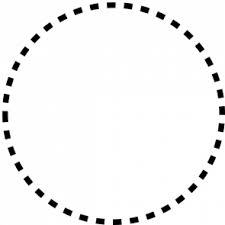Dots In A Circle

There are 40 dots spaced evenly in a circle. If 4 distinct dots W , X , Y and Z are picked randomly, what is the probability that W X intersects Y Z ?
If the probability can be expressed as b a , where a and b are coprime positive integers, find a + b .
The answer is 4.
This section requires Javascript.
You are seeing this because something didn't load right. We suggest you, (a) try
refreshing the page, (b) enabling javascript if it is disabled on your browser and,
finally, (c)
loading the
non-javascript version of this page
. We're sorry about the hassle.
4 solutions
This line of reasoning is very nice in that it does not require us to deal with the specific conditions in the problem. A similar approach can be used to solve this problem .
Without loss of generality, take W as given and number the points clockwise from 0 to 39 starting with W at 0. X , Y and Z are therefore chosen at random from whole numbers 1 to 39. The problem is equivalent to asking whether the point assigned to X is between the numbers assigned to Y and Z . Consider then the labels for X , Y and Z . X will have the least label 3 1 of the time and the greatest label 3 1 of the time. In those cases, W X will not intersect Y Z . The segments will intersect in the remaining 1 − 3 2 = 3 1 of the cases. The solution, therefore is 1 + 3 = 4
Total number of ways of selecting 4 distinct vertices are n(n-1)(n-2)(n-3)=(n!)/(n-4)! .Now we calculate the total number of favourable ways.Consider two intersecting diagonals whose point of intersection is not on the circumference.To any such pair of diagonals we can uniquely associate a quadrilateral that has these diagonals same as its own diagonals.Hence, for every pair of permissible intersecting diagonals, we have a unique quadrilateral and vice versa.Because of this bijection,we conclude that the total number of permissible intersecting diagonals is equal to number of ways of forming a quadrilateral = nC4.After selecting a pair of permissible intersecting diagonals,points W,X,Y and Z can be allotted to the endpoints of the diagonals in 4 ∗ 1 ∗ 2 ∗ 1 = 8 ways.Hence total number of favourable ways = 8 ∗ nC4.We have , given probability as favourable ways divided by total number of ways which comes out to be equal to 1/3.Hence, answer is 1+3=4.
There is a one line solution to this problem.
Hint: It doesn't matter how many dots there are (as long as there are more than 4).
Log in to reply
Pick a dot for W and then permute XYZ ( XYZ, XZY, YXZ, YZX, ZXY and ZYX). Reading clockwise WX intersects YZ only if X is in the middle ( 2 cases YXZ and ZXY)...2/6=1/3
(In your hint you mentioned that you needed MORE than 4... Would 4 be sufficient?)
Log in to reply
Yes, that's the idea. Counting the probability by "subcases" avoids having to do the tedious calculation/counting.
Yes, 4 is sufficient.
Log in to reply
@Calvin Lin – The calculations in Indraneel's solution are not at all tedious and can be done orally.You need to read his solution carefully.
Log in to reply
@Manish Maharaj – My point is that
- His solution could be shortened considerably to get at the crux of the problem
- There wasn't a need to involve n in the calculations.
beautiful problem..i solved it in this way: all possible sets of 4 points out of 40 = choose(4,40), this should be multiplied by 3 which are the possible lines between these 4 point. Those are also the possible cases. You then proceed to calculate the favourable cases 1*choose(4,40) since there is only one case in which the lines( that pass trough these 4 points) intersect themselves. favourable/possible = 1/3
Consider any set of 4 dots on the circle, A, B, C, D.
There are 3 ways that we can pair them up.
There is exactly 1 way that we get an intersection, namely when the pairs are separating each other.
Hence, the probability is 3 1 .
Since this holds for any set of 4 dots, the total probability is 3 1 .